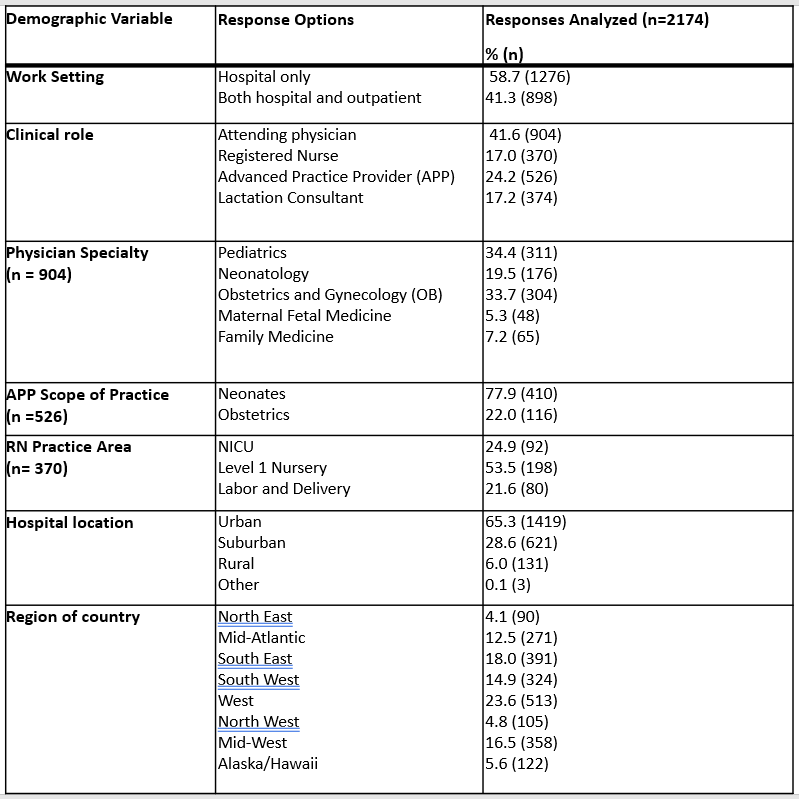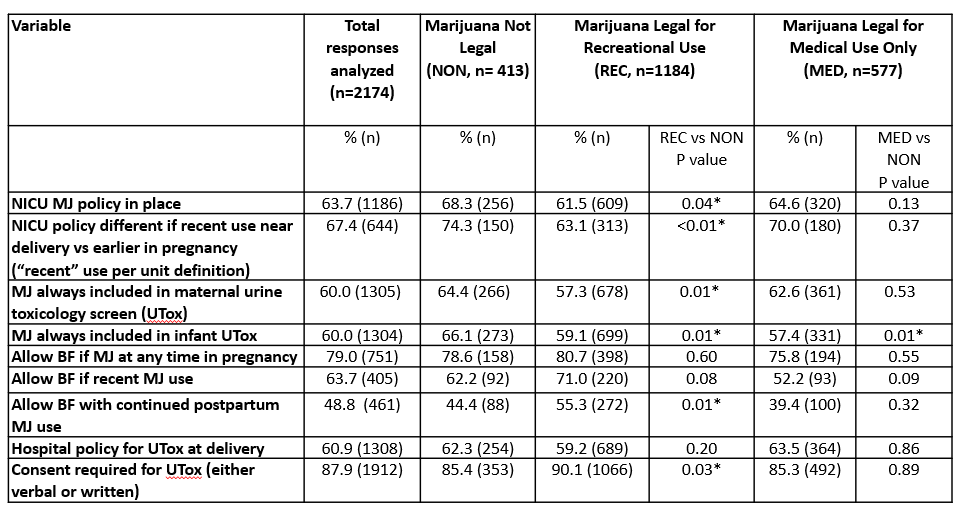Breastfeeding/Human Milk
Category: Abstract Submission
Breastfeeding/Human Milk I
416 - Hospital Policies Surrounding Breastfeeding Among Mothers Using Marijuana: A National Survey.
Sunday, April 24, 2022
3:30 PM - 6:00 PM US MT
Poster Number: 416
Publication Number: 416.301
Publication Number: 416.301
Amy C. Blake, Baystate Children's Hospital, Springfield, MA, United States; Laura Madore, Baystate Children's Hospital, Springfield, MA, United States; Margaret Parker, Boston Medical Center, Boston, MA, United States; Jessica Anderson, University of Colorado College of Nursing, Aurora, CO, United States; Heather Straub, University of Colorado School of Medicine, Aurora, CO, United States; Erica M. Wymore, University of Colorado School of Medicine, Aurora, CO, United States

Amy C. Blake, MD (she/her/hers)
Assistant Professor of Pediatrics
Baystate Children's Hospital
Springfield, MA, Massachusetts, United States
Presenting Author(s)
Background: Breastfeeding (BF) is the preferred method for newborn feeding but can expose infants to substances in the milk. With increased legalization, marijuana (MJ) is the recreational drug most used during lactation despite some evidence suggesting long-term harm to the exposed neonate. Devising and implementing hospital policies regarding BF in the setting of MJ use is challenging.
Objective: Describe national variation in hospital-based practices regarding BF in setting of maternal MJ use, and compare differences in hospital-based practices as defined by MJ legalization by state law.
Design/Methods: A cross-sectional REDCAP survey of obstetricians, pediatricians, advanced practice providers (APPs), lactation consultants (LCs), and nurses in birth hospitals throughout the United States was conducted from 11/16 – 12/17/2021. The anonymous survey was delivered via email listservs of professional organizations and Facebook groups. We queried hospital practices regarding BF with maternal MJ use. We compared responses by MJ legality in state of employment using t-tests for continuous variables and chi-square for categorical variables.
Results: A total of 2174 responses were analyzed. Most respondents were physicians (41.6%) or APPs (24.2%); of these, 67.3% were pediatric and 32.7% maternity care providers (Table 1). Policies were more likely to allow BF with MJ use occurring during pregnancy (but non-current) vs current use around delivery vs ongoing postpartum use (79.0 vs 63.7 vs 48.8%, p< 0.0001). A majority (78.5%) required a maternal urine screen negative for MJ to support BF.
Most respondents worked in states with legalized recreational MJ (REC; 54.5%) or with legalized medical MJ use (MED; 26.5%); only 19% were from states where MJ is illegal (NON) (Table 2). NON states were more likely than REC to have policies in place for BF with maternal MJ use (P=0.04) and to include cannabinoids in maternal (P=0.01) and infant toxicology testing (P= 0.01). REC and NON states were similar in allowing BF when MJ use occurred during pregnancy; REC states were more likely to allow BF with ongoing postpartum MJ use than NON (P=0.01) or MED (P < 0.001).Conclusion(s): Hospital policies regarding BF among mothers using MJ varied. Hospitals in states with MJ legalization were more permissive of BF with ongoing maternal MJ use. Consistent, directive guidelines across national organizations are warranted to reduce variability in counseling for this vulnerable population.
Table 1. Demographic variables of survey respondents.
Table 2. Variation in practice by marijuana (MJ) legality.
Objective: Describe national variation in hospital-based practices regarding BF in setting of maternal MJ use, and compare differences in hospital-based practices as defined by MJ legalization by state law.
Design/Methods: A cross-sectional REDCAP survey of obstetricians, pediatricians, advanced practice providers (APPs), lactation consultants (LCs), and nurses in birth hospitals throughout the United States was conducted from 11/16 – 12/17/2021. The anonymous survey was delivered via email listservs of professional organizations and Facebook groups. We queried hospital practices regarding BF with maternal MJ use. We compared responses by MJ legality in state of employment using t-tests for continuous variables and chi-square for categorical variables.
Results: A total of 2174 responses were analyzed. Most respondents were physicians (41.6%) or APPs (24.2%); of these, 67.3% were pediatric and 32.7% maternity care providers (Table 1). Policies were more likely to allow BF with MJ use occurring during pregnancy (but non-current) vs current use around delivery vs ongoing postpartum use (79.0 vs 63.7 vs 48.8%, p< 0.0001). A majority (78.5%) required a maternal urine screen negative for MJ to support BF.
Most respondents worked in states with legalized recreational MJ (REC; 54.5%) or with legalized medical MJ use (MED; 26.5%); only 19% were from states where MJ is illegal (NON) (Table 2). NON states were more likely than REC to have policies in place for BF with maternal MJ use (P=0.04) and to include cannabinoids in maternal (P=0.01) and infant toxicology testing (P= 0.01). REC and NON states were similar in allowing BF when MJ use occurred during pregnancy; REC states were more likely to allow BF with ongoing postpartum MJ use than NON (P=0.01) or MED (P < 0.001).Conclusion(s): Hospital policies regarding BF among mothers using MJ varied. Hospitals in states with MJ legalization were more permissive of BF with ongoing maternal MJ use. Consistent, directive guidelines across national organizations are warranted to reduce variability in counseling for this vulnerable population.
Table 1. Demographic variables of survey respondents.

Table 2. Variation in practice by marijuana (MJ) legality.

